Iowa may be called a flyover state, but it’s also a key producer of corn in the U.S. With all those open fields comes a lot of room for unique animals. This state is home to bobcats, cougars, coyotes, and even mountain lions. It’s also home to a fair number of spiders, and some of them get quite big. In this article, we’re going to look at the biggest spiders in Iowa. We’ll show you how big they get and if you need to worry about them biting you.
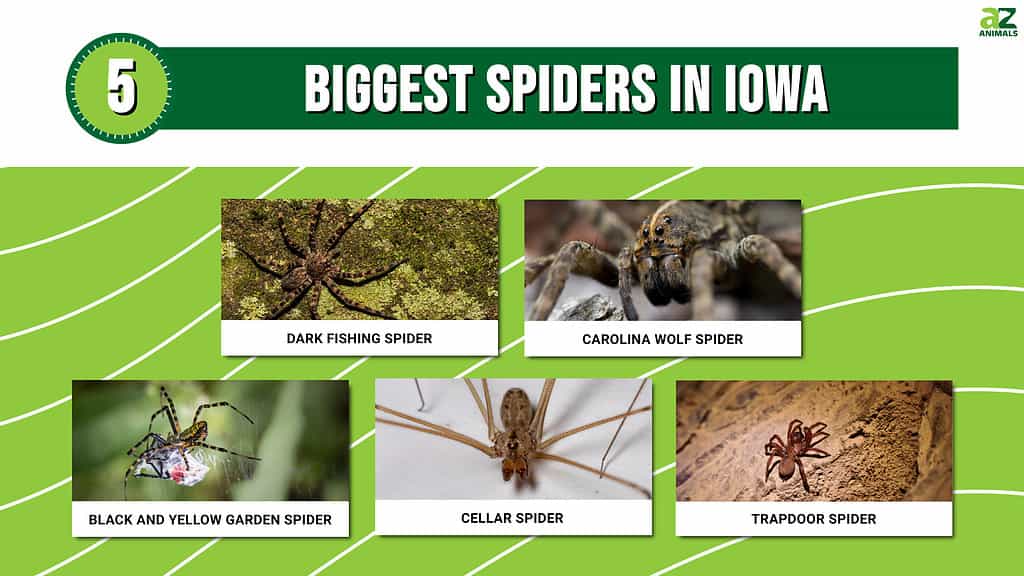
What Are the Biggest Spiders in Iowa?
The biggest spiders in Iowa aren’t as large or numerous as those found in other states, and that’s a bit of a blessing. That doesn’t mean you won’t find several spiders in the state that measure over 2 inches, counting their leg span, though.
With that in mind, let’s break down a list of the five biggest spiders so you can learn what they look like, how they affect humans, and where you will run into them.
5. Trapdoor Spider
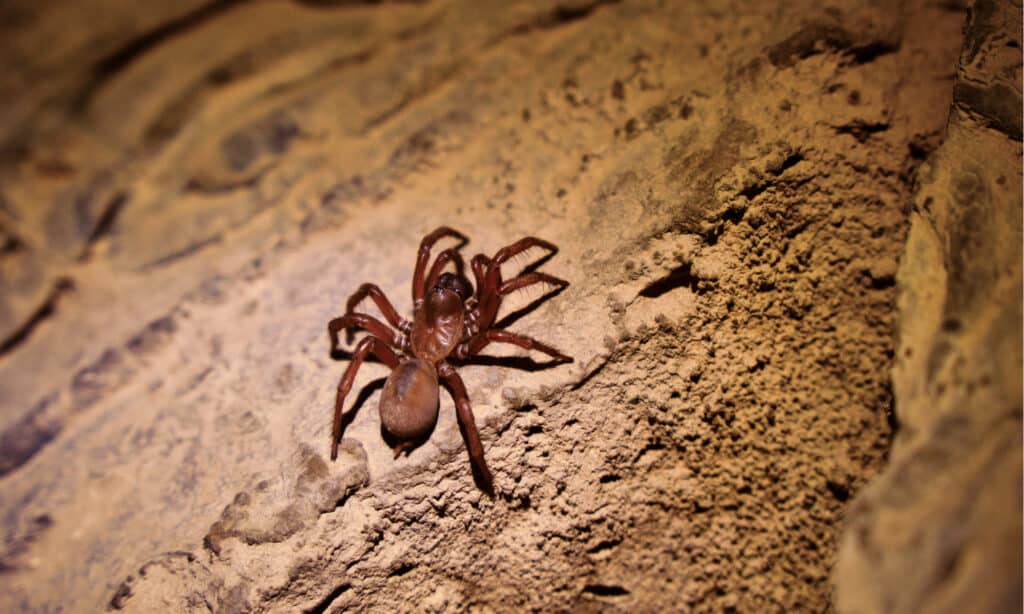
Trapdoor spiders from the
Ummidiagenus are cunning hunters.
©Geartooth Productions/Shutterstock.com
| Scientific Name | Size | Danger to Humans |
|---|---|---|
| Ummidia Genus | 1-2 inches | Delivers a mildly painful bite. |
The trapdoor spider looks pretty menacing. This spider has a dark brown or black carapace and a black abdomen. The cephalothorax and the legs are shiny, and the abdomen is hairy. The resulting look is one that strongly resembles a tarantula, but these spiders are much smaller.
The trapdoor spider may look dangerous, but its bite is not that serious. If one does bite you, it’ll result in mild pain and a little bit of swelling. Other than that, you don’t have to worry.
The chances of you finding a trapdoor spider are low, though. They build web-lined burrows with a hinged door opening to the environment. They wait for prey to come by, throw open the door, and then grab whatever insect or arthropod was unfortunate enough to wander past. In other words, don’t worry about these spiders because they’re too busy for the likes of humans.
4. Cellar Spider
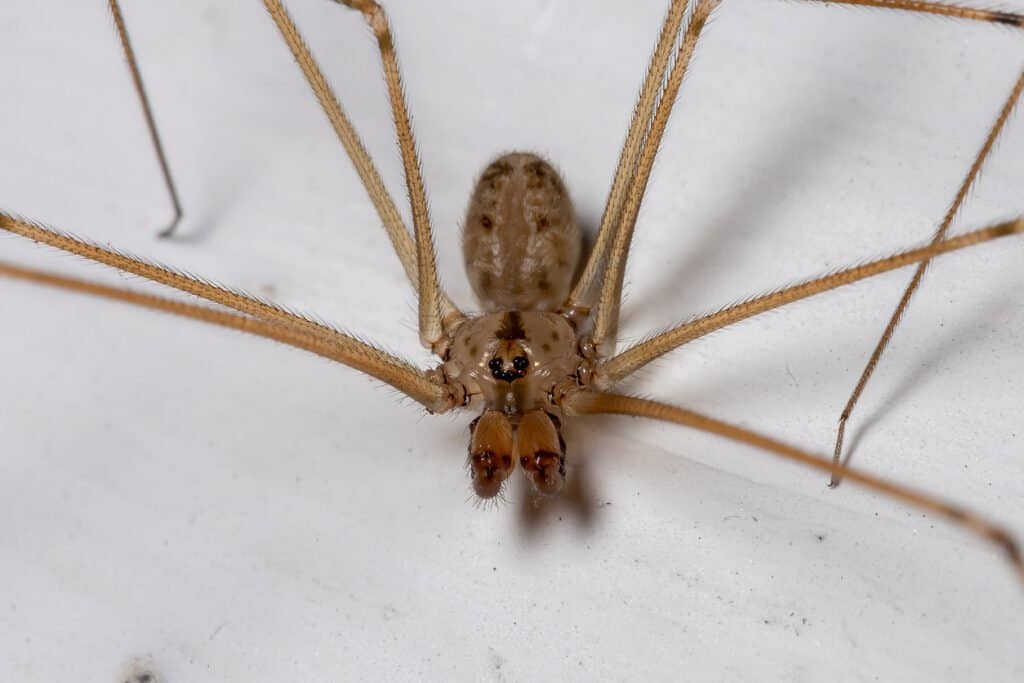
Cellar spiders can shake their web to make them harder to spot.
©iStock.com/ViniSouza128
| Scientific Name | Size | Danger to Humans |
|---|---|---|
| Pholcus phalangioides | 1-2 inches | A bite may cause a mild burning sensation. |
The cellar spider is certainly creepy, but not harmful. This spider rarely gets anywhere near humans to bite them. However, if one does bite you, it may hurt and feel like it’s burning, but it won’t do lasting damage.
These spiders are often tan, brown, or grayish brown with a peanut-shaped, somewhat translucent body, and long, skinny legs. As their name implies, these spiders are usually found in basements and storm cellars, but you’ll also find them in dark places in your garages and barns.
They are sometimes referred to as daddy long legs because of their long legs and similarity to the harvestman that shares that name. However, neither of these creatures is harmful, despite the claims that their venom is deadly, because it’s really not that potent. It’s best to let them continue to capture and eat other insects and arachnids, including dangerous spiders.
3. Black and Yellow Garden Spider
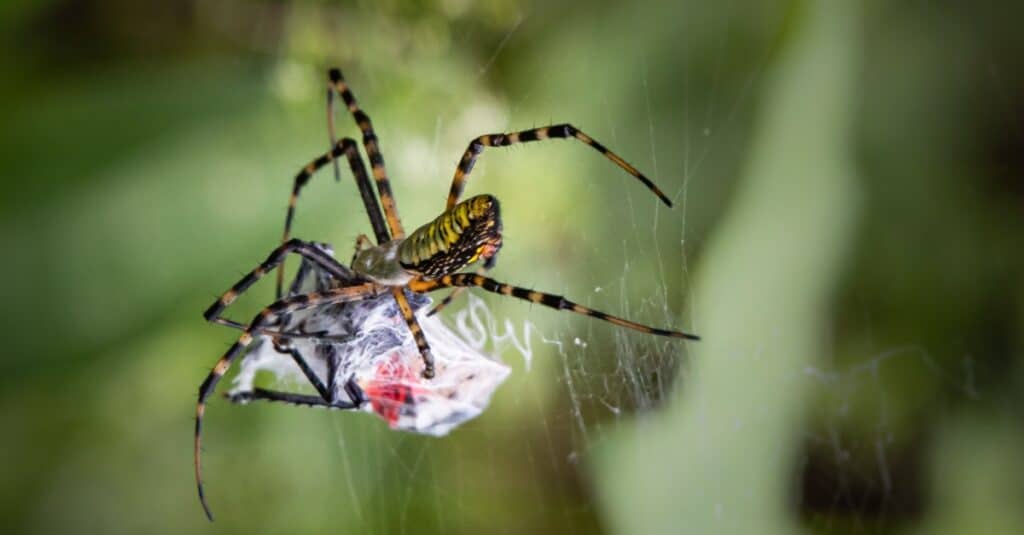
Black and yellow garden spiders are orb weavers with a unique web.
©cwieders/Shutterstock.com
| Scientific Name | Size | Danger to Humans |
|---|---|---|
| Argiope aurantia | 0.5-3 inches | Rarely bites humans, but it may cause pain and swelling. |
The scientific name for this spider mentions that this spider has a silver face, and the common name tells us that it has a black and yellow coloration on its body. Both of these names hold true, and it makes identifying this spider easy.
The other way to tell this spider apart from others lies in its web. These spiders make webs that can measure several feet wide and have a very conspicuous, thick, zig-zag line running down the center. This portion is called the stabilimentum, and it’s believed to serve many purposes.
You’ll find this particular spider in vegetation near open areas, in the eaves of houses, and around other outbuildings. They probably won’t invade your home, but you’re bound to see them in your garden. If you disturb their webs and handle them, you may get bitten. Their bites cause some pain and swelling, but nothing severe.
2. Carolina Wolf Spider
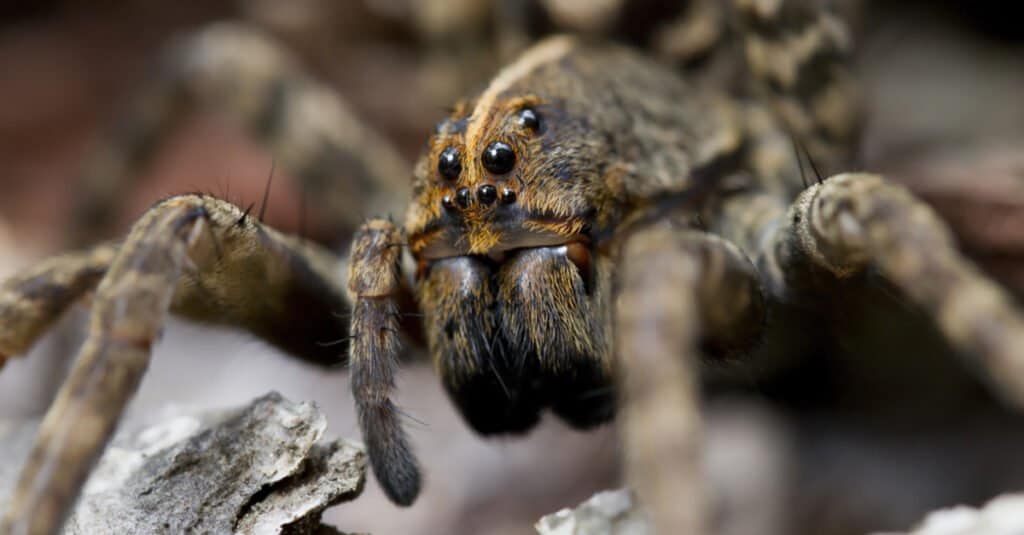
Carolina wolf spiders are usually light brown, but they can vary in color and be rather dark.
©Will E. Davis/Shutterstock.com
| Scientific Name | Size | Danger to Humans |
|---|---|---|
| Hogna carolinensis | 2-4 inches | The bite from this spider causes local pain and swelling. |
The Carolina wolf spider is among the biggest spiders in Iowa, and it has a fair case for being the largest due to its weight. Nevertheless, this spider is remarkable for its size and looks as they measure up to 4 inches long with a body that measures up to 2 inches. Often, the body will be light brown, sandy brown, or dark brown.
These spiders have two dark sections on their carapace separated by a light-colored stripe that starts at the eyes and extends the length of the cephalothorax. They have a dark brown patterned mark on the center of their abdomen that is surrounded by light colors.
The Carolina wolf spider delivers a painful bite due to its large size. Although these bites usually hurt a fair amount and swell up, allergic reactions can occur. These spiders actively hunt their prey, so you will see them on the ground, hiding in vegetation, or waiting in small burrows under rocks or logs.
1. Dark Fishing Spider
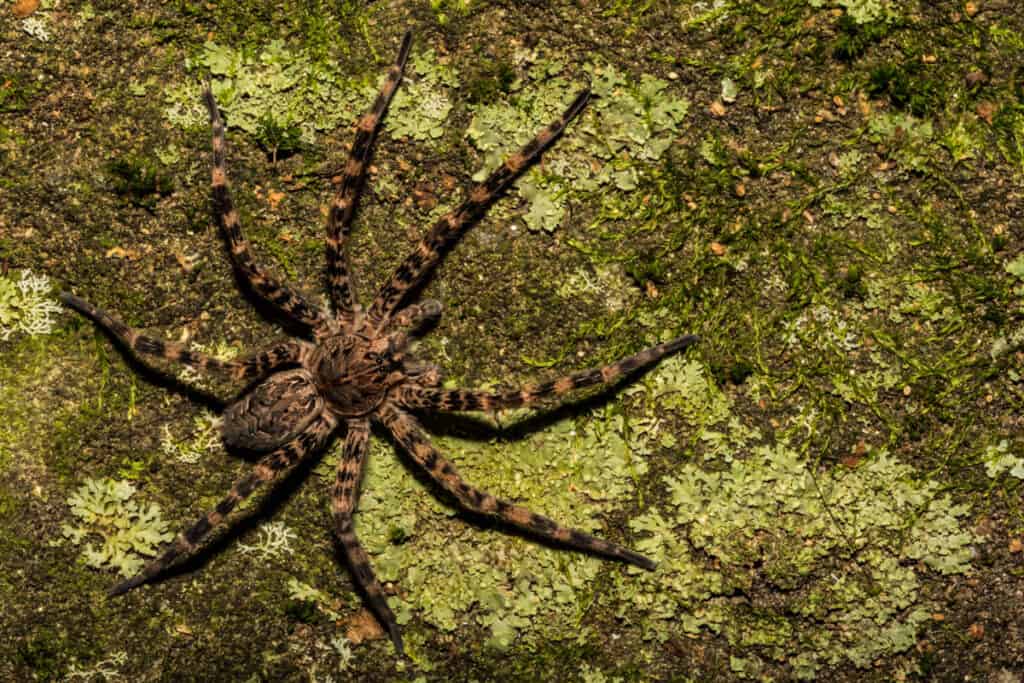
The dark fishing spider is often confused for a wolf spider due to their similar looks.
©iStock.com/JasonOndreicka
| Scientific Name | Size | Danger to Humans |
|---|---|---|
| Dolomedes tenebrosus | 3.5-4.5 inches | Can bite humans and cause pain similar to a bee sting. |
The dark fishing spider is a common sight to people that spend time on the lakes in Iowa. These are the biggest spiders in Iowa since they measure over four inches counting their total leg span. Unlike other members of Dolomedes, the dark fishing spider is known for spending a lot of its time around trees and human structures rather than on the water.
These spiders are mostly known for their size. However, they also have a distinct look with highly patterned black and brown bodies with light and dark chevrons on their upper legs and banding on their lower legs.
They still hunt on and around the water, chasing down and eating small aquatic beings. Although their size and speed may be unnerving to some people, they aren’t dangerous to humans. The rare bite from one of these will feel like a bee sting. Still, they would rather flee than attack a person.
Having identified the biggest spiders in Iowa, you can see that they don’t pose a serious threat to people. Still, the black widow and brown recluse spiders can be very dangerous to a person, and they both can be found in the state. They may not be big, but their bites can cause serious harm. Learn how to identify those spiders and how to dispose of them to keep you and your family safe.
Summary of the Biggest Spiders in Iowa
| Number | Common Name | Scientific Name | Size |
|---|---|---|---|
| 1 | Trapdoor Spider | Ummidia Genus | 1-2 inches |
| 2 | Cellar Spider | Pholcus phalangioides | 1-2 inches |
| 3 | Black and Yellow Garden Spider | Argiope aurantia | .5-3 inches |
| 4 | Carolina Wolf Spider | Hogna carolinensis | 2-4 inches |
| 5 | Dark Fishing Spider | Dolomedes tenebrosus | 3.5-4.5 inches |
The photo featured at the top of this post is © iStock.com/JasonOndreicka
Sources
- Arthropod Museum (1970) arthropod.uark.edu/trapdoor-spider/
- Missouri Department of Conservation (1970) mdc.mo.gov/discover-nature/field-guide/cellar-spiders
- South Dakota State University Extension, Available here: https://extension.sdstate.edu/black-and-yellow-garden-spiders
- Web MD (1970) webmd.com/a-to-z-guides/what-you-need-to-know-about-a-wolf-spider-bite#:~:text=Wolf spiders don't pose,it shouldn't last long
Thank you for reading! Have some feedback for us? Contact the AZ Animals editorial team.






